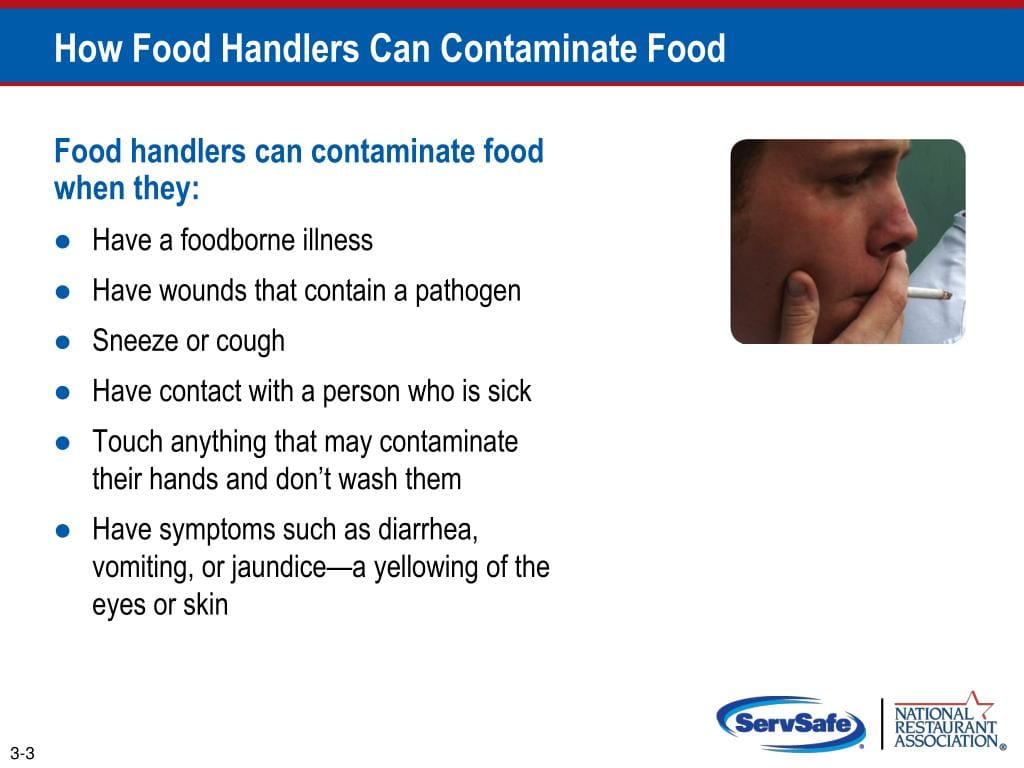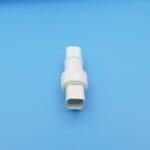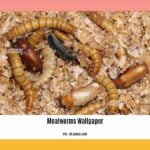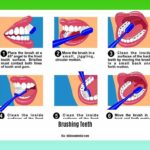Chewing tobacco and food handling are a dangerous combination. While designated break areas exist, they don’t eliminate the risks of contamination. This article explores the potential hazards of chewing tobacco while working with food and explains why it’s incompatible with ServSafe guidelines and basic hygiene principles.
Tobacco’s Threat to Food Safety
The crux of the issue lies in cross-contamination. Chewing tobacco introduces bacteria, saliva, and tobacco particles that can easily transfer to food. This can lead to foodborne illnesses, posing a serious health risk to consumers. Nobody wants their meal accompanied by a dose of salmonella or other harmful pathogens.
ServSafe guidelines, the industry standard for food safety, stress meticulous hygiene practices. While they may not explicitly mention chewing tobacco, they underscore the vital importance of handwashing, glove use, and minimizing bare-hand contact with ready-to-eat food. These practices are virtually impossible to maintain while chewing tobacco. Microscopic particles can cling to hands, clothing, and even become airborne, potentially contaminating food and surfaces.
Designated Areas: A False Sense of Security?
Designated break areas, while seemingly a reasonable compromise, aren’t foolproof. Tobacco residue can easily transfer from hands to surfaces like doorknobs and light switches, then back to the food prep area. Even thorough handwashing after tobacco use probably won’t eliminate all traces of residue. The lingering odor can also be off-putting for customers and may even taint the taste of food.
The Ethical Responsibility of Food Handlers
Food handlers bear the responsibility of ensuring the safety of the food they prepare. This isn’t just about adhering to regulations; it’s about prioritizing the well-being of consumers. Chewing tobacco on the job jeopardizes this responsibility and demonstrates a lack of professionalism, potentially damaging a business’s reputation.
Alternatives and Solutions
Ideally, food handlers should avoid all tobacco use during work hours. For those struggling with nicotine addiction, resources like counseling, support groups, and nicotine replacement therapies can aid in quitting.
If breaks are necessary, designated areas away from food prep zones are essential. However, thorough handwashing and even changing outer layers of clothing after tobacco use is vital to minimize contamination risks.
Restaurant owners and managers should provide comprehensive training on tobacco-related hygiene risks, encouraging open communication and emphasizing the importance of a pristine environment. Customers can also contribute to food safety by reporting any observed unhygienic practices.
Tobacco and ServSafe: Unreconcilable Differences?
| Potential Issue | Likely Outcome | ServSafe Principle Violated (Indirectly) |
|---|---|---|
| Tobacco residue on hands | Cross-contamination of food, potentially leading to foodborne illness. | Handwashing, Glove Use, Bare Hand Contact |
| Airborne tobacco particles | Contamination of food and surfaces. | General Hygiene and Food Storage |
| Saliva transfer | Direct contamination of food and surfaces with bacteria and other harmful microorganisms. | Handwashing, Glove Use, Bare Hand Contact |
| Lingering odor | Unpleasant dining experience for customers. | General Cleanliness |
| Perception of unhygienic practice | Loss of customer trust and potential damage to business reputation. | Professionalism |
When Are Food and Tobacco Incompatible?
Food handlers must never eat, drink, smoke, or chew gum or tobacco:
- While handling food: This prevents direct contamination.
- In food prep areas: Even without direct contact, the risk of cross-contamination remains high.
- Near cleaning/sanitizing areas: Prevents introduction of contaminants and chemical transfer.
- Outside designated break areas: Reinforces the separation of food handling and consumption zones.
| Activity | Allowed in Food Prep/Handling Areas | Allowed in Designated Break Areas |
|---|---|---|
| Eating | No | Yes |
| Drinking | No | Yes |
| Smoking | No | Yes |
| Chewing Gum/Tobacco | No | Yes |
Food safety is paramount. These guidelines are designed to minimize contamination risks, and ongoing research continually refines our understanding of best practices. Some experts suggest that even stricter measures may be necessary in certain contexts, especially when serving vulnerable populations. Staying informed about the latest guidelines and prioritizing hygiene are essential for all food handlers.
Where Can Gum Be Chewed?
Chewing gum, while seemingly innocuous, can introduce saliva and potential contaminants into food. Therefore, it’s best avoided altogether while handling food. Designated break areas, away from food preparation, serving, and cleaning zones, are the only appropriate places for food handlers to chew gum.
Forms of Chewing Tobacco
Chewing tobacco is available in various forms, including loose-leaf, twist, plug, and flavored varieties. Regardless of the form, chewing tobacco delivers nicotine through absorption by the mucous membranes in the mouth. It’s essential to recognize that all forms of chewing tobacco are highly addictive and carry serious health risks, including oral cancer, gum disease, and heart disease. The health risks associated with chewing tobacco further underscore the importance of avoiding its use in food handling environments.
- Revolution Space: Disruptive Ion Propulsion Transforming Satellites - April 24, 2025
- Race Through Space: Fun Family Game for Kids - April 24, 2025
- Unlocking the Universe: reading about stars 6th grade Guide - April 24, 2025
















